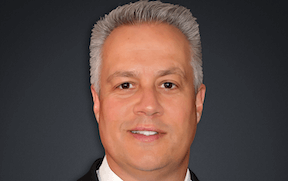PERSON OF THE WEEK: In the mortgage industry, there has been a strong focus on how technology is improving the origination process, with many new innovations introduced in the past few years, but arguably there has been a lack of discussion on how technology is bringing greater speed, efficiency, transparency and accountability to the servicing side of the business.
Considering that a mortgage can be originated in about 40 days and yet it is serviced up to 30 years, it can be argued technology’s role on the servicing side of the business is equally as important to operations as it is to the origination side.
Today, mortgage servicers and their third party-partners are rapidly investing in Web-based technologies – in particular mobile technologies – not only to improve the borrower experience but also to bring new efficiencies to back-office operations.
To learn more about how technology is transforming mortgage servicing operations, including field services, MortgageOrb recently interviewed industry veteran Brian Augenstein, chief technology officer at USRES.
Q: What are some of the biggest technology disrupters you’ve seen during the last three decades?
Augenstein: There has been a complete evolution from when I first began my career. That was in the days when AOL connected to the phone line and you hoped no one else dialed into that line – the days of floppy disks. Needless to say, we have come a very long way since then.
From a software development perspective, there has been a total shift from client server applications to what has become an almost completely Web-based infrastructure. This move has created an era of unprecedented flexibility – moving business previously relegated to the inside of four walls to worldwide functionality.
The development toolset has evolved considerably – this single, rapid framework evolution has provided more benefits to mortgage banking customers than any other.
Thirty years ago, when we had to build every program from scratch, a considerable amount of time was dedicated to the mundane, repetitive tasks that are required in software development. Fast-forward to present day and we have the .NET framework and other similar libraries and tools, which allow for the development of a wide range of applications, from Web to mobile to Windows-based, that work with several programming languages.
Now, we can build software much faster with improved quality to deliver the sophisticated features our customers want and need.
Q: What major technology advancements do you see on the horizon? Any predictions?
Augenstein: Instant, on-demand and always connected devices in the field will revolutionize the way work gets done. The flow of business will be immediate, rather than waiting a day or in some cases even multiple days for data.
Our customers are asking for accountability, geo-tracking and other responsible measures to ensure that the work done on properties is functionally correct. The cloud is changing the way our vendors work, moving from clipboards and cameras to immediate data upload via connected device.
Q: How do you determine which new developments or products are priorities?
Augenstein: It is paramount that new products have the right combination of agility and usability. It does not do any good to provide a solution that customers do not need. Instead, every solution should be developed to solve the real challenges customers are facing – not just what software vendors want to provide.
Being closely in touch with our account managers and maintaining open dialog with our strategic alliances and business partners enables us to hear firsthand about the actual needs customers have. Then, as a team, we can develop the tools and workflows to fulfill those needs
Often, I have seen other companies develop an edgy new product, but it does not truly solve for anything. My priorities are business value, provide greater security, improve usability and reliability.
Q: What are the major challenges facing servicers currently and how can those be addressed by technology?
Augenstein: Speed – as it relates to the management of day-to-day operations and how quickly work gets done. Our customers want orders to be completed as efficiently as possible. As such, they need the right tools to manage the complexities inherent in the process.
Technology provides the opportunity to ease those complexities and ensure that work gets done correctly and on time.
Accountability can be delivered and automated through tech offerings; the management of contractors, or monitoring repairs and/or renovations can be included through tech solutions, as well.
Taking advantage of different markets or pursuing industry trends could potentially open up new lines of business and increase market share for our customers.
Q: The mortgage industry as a whole has historically under-invested in technology. Do you think that is changing?
Augenstein: As we move into a mobile-first space, the mortgage industry will be faced with providing tools and services that operate in an always-connected environment. With everything at our fingertips, the future of the industry must be nimble and flexible, as well as the technology platforms that support it.
At our firm, we are investing heavily in new technologies to benefit our customers and to support this ongoing evolution in the way people work. We feel it is important for us to diversify our business lines and enter marketplaces that have a direct and meaningful impact for our customers – to provide value-added tools and resources.
Also, as I mentioned, there is a significant technological shift occurring that will eliminate the complexity of software development, allowing a program to be built with one set of tools and apply everywhere, i.e., iOS, Windows, etc.
The amount of time saved in development alone will create an environment rich with new opportunities. This will mark a dramatic change in the way solutions are approached, created and delivered – and will result in pushing current capabilities and functionality well beyond present levels.











